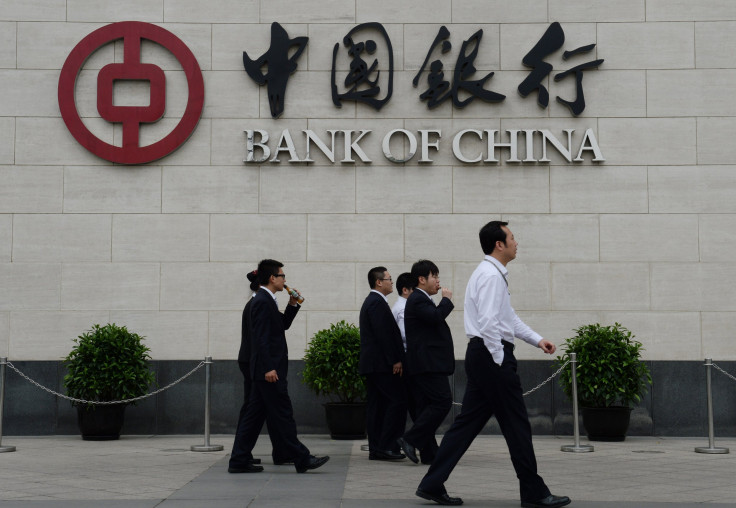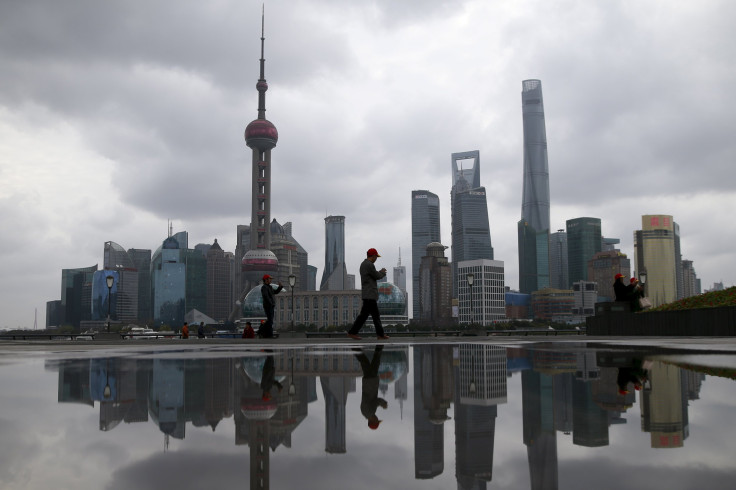Report Warns Of Rising Bad Loans At China’s Banks, As George Soros Sees Dangers In China’s ‘Credit-Fueled Growth’

SHANGHAI — Auditor PricewaterhouseCoopers became the latest to sound the warning against debt risks at China’s banks — as veteran investor George Soros said the country’s credit-fueled development bore an "eerie" resemblance to the situation in the U.S. at the start of the financial crisis in 2007-08.
In an annual report on China’s banking industry, PwC noted that net profit growth at the country’s five main commercial banks fell to 0.69 percent last year, compared to growth of more than 6.5 percent in 2014, according to its China Banking Newsletter.
Cuts in interest rates, lowered six times over the past 18 months by the government to encourage lending and boost the overall economy — particularly the property sector — were seen as one factor in reducing banks' revenues. But the potential risks of higher lending were highlighted by the fact that nonperforming loans (NPLs) at China’s 18 major listed banks rose by more than 48 percent, or some $146 billion, in 2015, PwC said, leading to a 1.65 percent increase in the average bad loan ratio, up 0.43 percentage points from a year earlier.

The increase is similar to that reported by China’s banking regulator for the industry as a whole earlier this year, but PwC’s report further highlighted that "past-due loans" — those overdue but not yet officially classified as nonperforming — at the 18 banks soared by more than 45 percent to 1.51 trillion yuan ($233 billion) at the end of last year, "pushing the past-due loan ratio to 2.7 percent," an increase of 0.76 percentage points on 2014’s figure.
PwC analysts warned there was a “high possibility that bad loans will surge further," with the significant growth in past-due loans likely to lead to more turning into NPLs, Chinese media reported.
And while some smaller city commercial banks saw their profits rise, PwC said most banks would face new capital pressure and should watch their capital levels, according to the South China Morning Post.
Recent months have seen a sharp rise in lending, as the Chinese government eases monetary policy in an attempt to boost growth, which fell to its slowest rate in a quarter century — 6.9 percent — last year. In January, new loans rose by a record 60 percent year-on-year, while the nation’s total outstanding loans — all those already issued — were up 14.7 percent by the end of March compared to a year earlier, at around $15.2 trillion, the Xinhua News Agency reported Thursday. Relaxation of rules governing housing loans and downpayments has led to a particular boom in the country’s property sector, with total property loans up 22.2 percent by the end of March, and those for individual home purchases up 25.5 percent at 15.8 trillion yuan (around $2.4 trillion).
The government recently tightened regulations again in Shanghai and Shenzhen, following sharp rises in property prices over the past two months. And it has called for a crackdown on gray-market lending, which has allowed many buyers to borrow money, sometimes at high interest rates, to cover the property downpayments required by the government. Such loans have come either from the relatively unregulated online P2P lending sector, or from real estate agents themselves — but some industry experts say it may be hard to clamp down on such lending.
China’s banking regulator said in February that NPLs accounted for some 1.67 percent of banks’ total loans by the end of 2015, while “special mention” loans — those not yet classified as nonperforming but seen as high-risk — accounted for a further 3.79 percent of total loans. But analysts at leading Chinese investment bank, China International Capital Corp., have said the true level of bad debt in the banking system could be more than 8.1 percent, and the fact that China's banks' NPLs were equivalent to around three-quarters of their total profits last year has led to warnings from some economists.

Speaking at the Asia Society in New York Wednesday, financier George Soros added his voice to warnings about an over-reliance on lending to boost China's economy, saying the nation's current situation "eerily resembles what happened during the financial crisis in the U.S. in 2007-08, which was similarly fueled by credit growth," Bloomberg News reported.
Soros previously aroused anger among Chinese officials in January, when he said at the World Economic Forum in Davos that he was betting against Asian currencies, partly because he believed a hard landing for China’s economy was “practically unavoidable.”
In his latest comments, the veteran investor said that China’s move to link the yuan, which has stabilized somewhat in recent months, to a basket of currencies rather than just to the U.S. dollar was “healthy,” but he warned that "most of money that banks are supplying is needed to keep bad debts and loss-making enterprises alive," Bloomberg said.
The Chinese government has said that it is taking steps to ensure that an increase in fixed-asset investment and lending will not create a bubble, or produce more overcapacity in its industry, particularly the state sector, as the lending boom following the financial crisis in 2009 is seen to have done.
But the government has said it will increase the budget deficit from 2.3 percent of gross domestic product to 3 percent this year, as it seeks to stabilize the economy. And credit rating agencies Moody’s and Standard & Poor's both recently downgraded China’s credit rating from stable to negative.
Andrew Colquhoun, head of Asia-Pacific sovereigns at another agency, Fitch Ratings, was quoted by Bloomberg Thursday as expressing concern at the rise in borrowing in China, saying the nation was “adding to a debt burden that’s already unsustainable,” and warning that this could derail economic recovery.
Not everyone agrees. Qu Hongbin, chief China economist at HSBC, wrote in a note sent to International Business Times Thursday that while China’s debt-to-GDP ratio was high, at 250 percent by the end of last year, concerns that the country’s debt levels were “reaching a critical threshold and posing a systemic risk are overblown.”
Qu said the high debt ratio was partly a result of “the high national saving rate and a financial structure dominated by banks,” which meant household savings were lent out by banks as loans rather than invested in equities. He said this meant Beijing still had room to boost growth and “fight deflation with targeted stimulus to support infrastructure investment and mortgages.”
And Qu said data suggested that funds were being directed toward “needed infrastructure investment and mortgage lending. ... Investment in sectors with overcapacity is slowing.” He said that this demonstrated that "reflation" was not contradictory to the type of structural reform of industry that many economists say China needs.
China’s growth slowed to 6.7 percent in the first quarter of this year, but some analysts have seen cause for optimism in recent data showing rebounds in manufacturing activity and producer prices, as well as the first expansion in exports for nine months in March.
Reuters quoted anonymous Chinese officials this week as saying the improved data had reduced the pressure for increasing fiscal stimulus. But many experts both inside and outside China have warned that the improvements do not mean that the country's economy has fully stabilized. The officials also said that some easing would continue, with the possibility of further interest rate cuts not excluded.
© Copyright IBTimes 2024. All rights reserved.






















